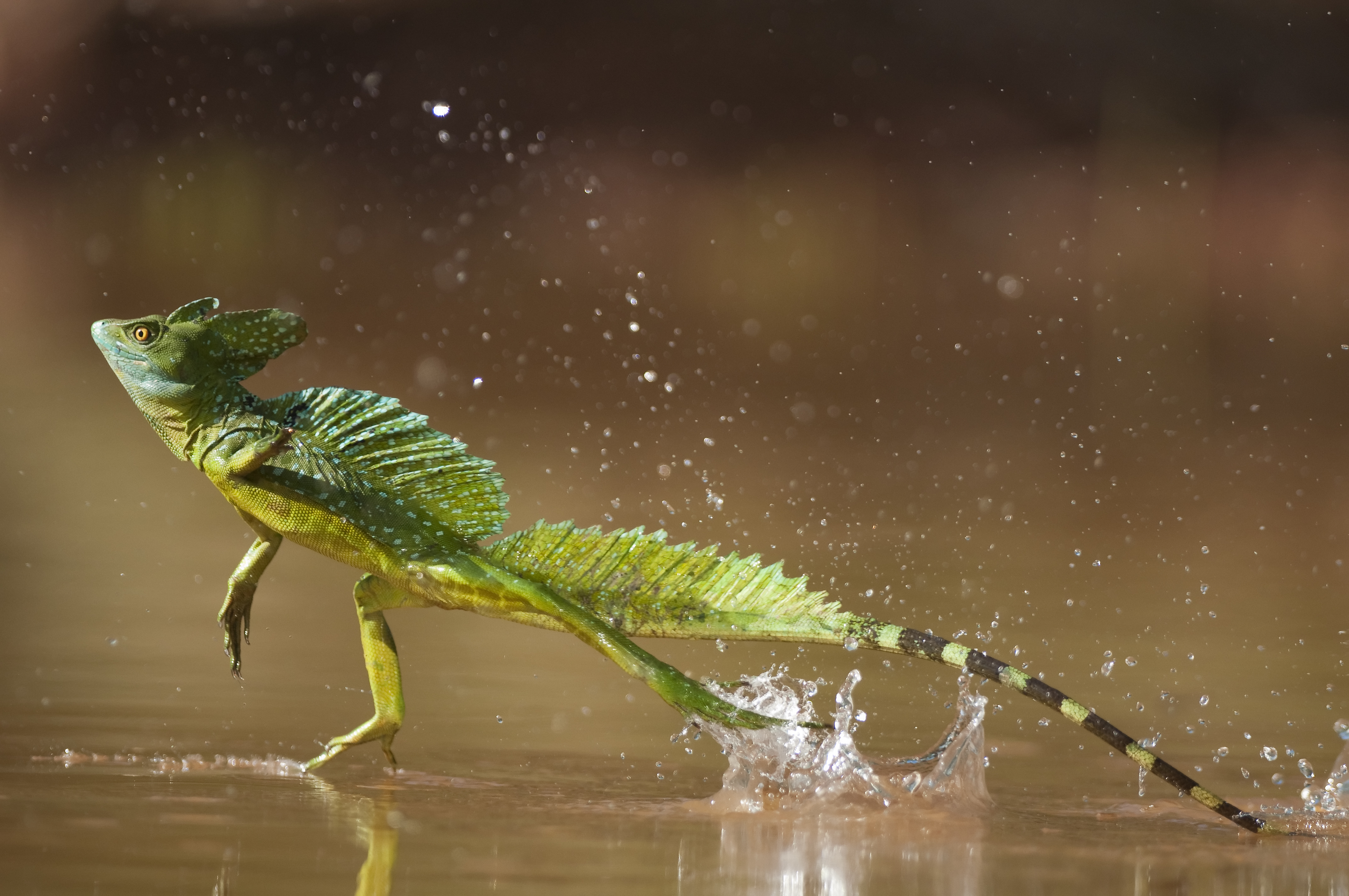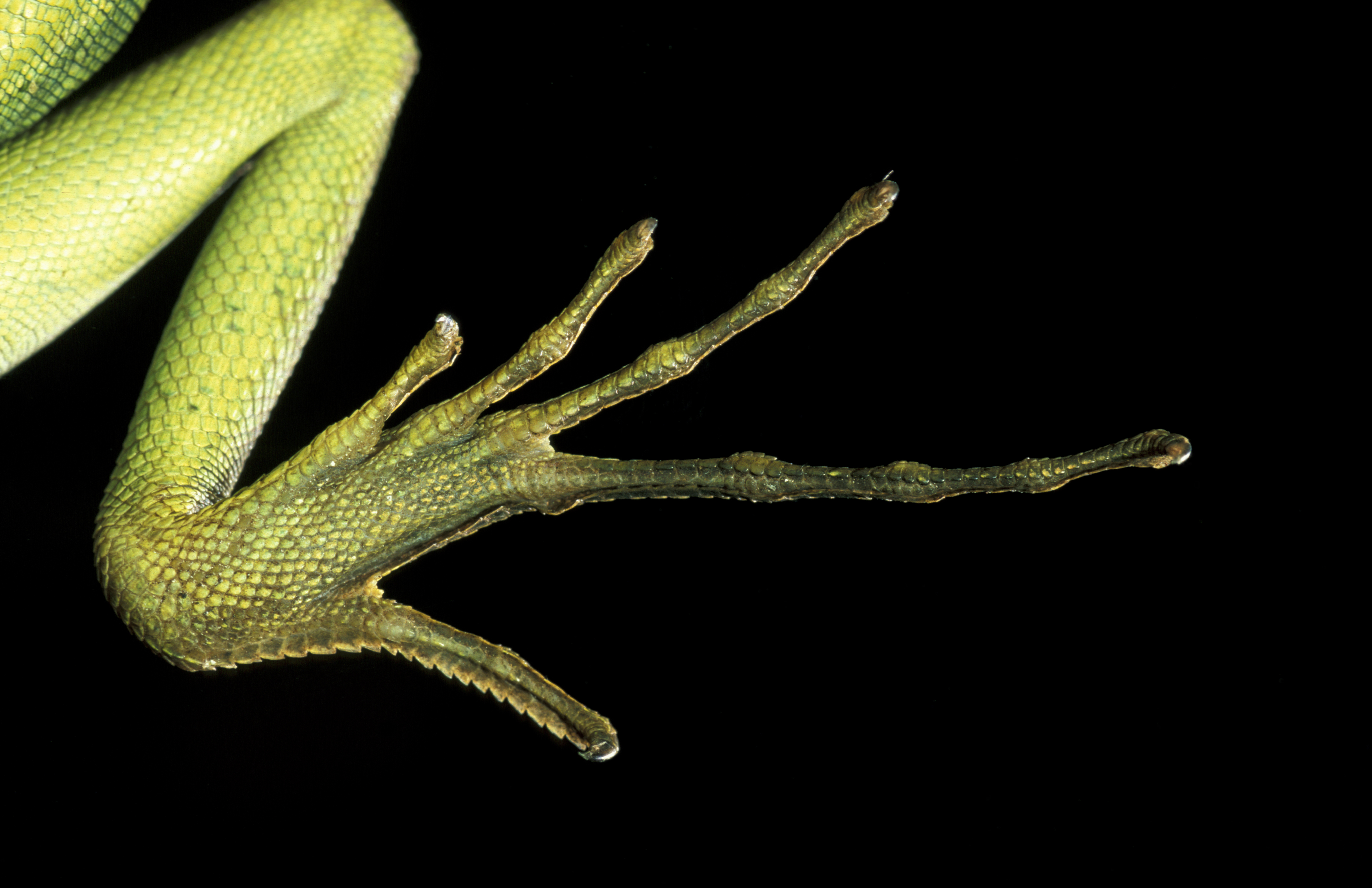Basilisk lizard is a reptile known for its ability to run across the surface of water. The lizard resembles an iguana, with a thick body and a long tail. It is native to forests of Mexico and Central and South America. There are several species (kinds) of basilisks.

The basilisk lizard may reach about 3 feet (1 meter) long. The lizard’s tail makes up about three-quarters of this length. The skin is brown or bright green, with some stripes or spots. The lizard has a crest on its head and back. This crest is larger in adult males. Many scientists think the male’s large crest plays a role in attracting mates.
Basilisks are often found along the edge of streams or rivers. The lizards run across the water on their hind legs to escape danger. They run quickly, skipping across the water’s surface. Special flaps between their toes help them not to sink. Small basilisks can run 30 feet (9 meters) or more before sinking. Larger adults can run shorter distances. Basilisk lizards are strong swimmers. After their run ends, they often swim or dive below the surface.

Basilisk lizards feed on insects and spiders and sometimes small vertebrates (animals with backbones). They also eat grasses, leaves, flowers, and fruits. Basilisks are eaten by birds of prey, caimans and crocodiles, fish, large lizards and mammals, and snakes.
To attract the female, the male basilisk bobs its head up and down. After mating, the female lays from 2 to 20 eggs. The eggs hatch within about 90 days. Basilisks may live more than two years in the wild.
The name basilisk refers to a mythical European serpent that was capable of killing with its gaze (see Basilisk). The mythical beast had a crown or crest on its head and walked upright. The basilisk lizard is sometimes called the Jesus lizard, a reference to its ability to walk on water.
